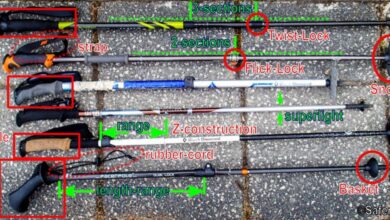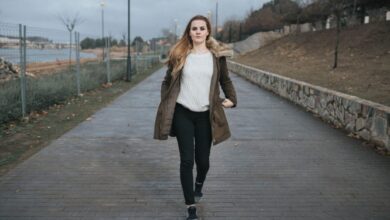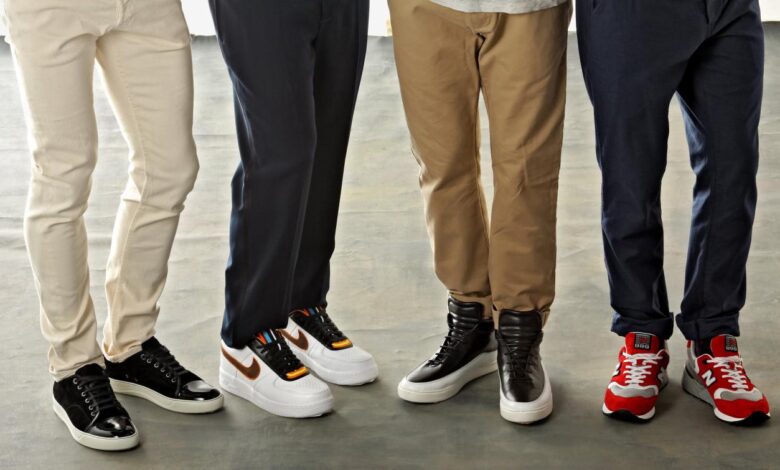
Should Walkers Wear Rocker Shoes?
Should walkers wear shoes with rockers? This question is a hot topic in the fitness and walking community, with passionate arguments on both sides. Rocker shoes, with their unique curved soles, are designed to mimic the natural rolling motion of your foot, promising a smoother, more efficient stride.
But are they truly beneficial for walkers, or just a trendy fad? Let’s delve into the science and explore the pros and cons of this innovative footwear.
Rocker technology in shoes is a relatively new concept, but it’s quickly gaining popularity among walkers seeking to improve their performance and reduce stress on their joints. By mimicking the natural rocking motion of the foot, rocker shoes aim to enhance efficiency and comfort during walking.
But are they truly a game-changer for walkers, or just a trendy fad? Let’s explore the science and uncover the potential benefits and drawbacks of incorporating rocker shoes into your walking routine.
Understanding Rocker Technology
Rocker technology in footwear refers to the curved shape of the sole, which helps promote a more natural rolling motion during walking. This design element aims to improve gait efficiency and reduce stress on joints, particularly the knees and ankles.
Types of Rocker Designs
Rocker designs are categorized based on the location and extent of the curvature in the sole. The placement of the rocker determines its intended purpose and the specific gait mechanics it influences.
- Heel Rocker: The curvature is located in the heel area, promoting a smooth transition from heel strike to mid-stance. This design is commonly found in shoes for runners and walkers who want to reduce impact forces.
- Midfoot Rocker: The curvature is positioned under the midfoot, encouraging a more efficient rolling motion from mid-stance to toe-off. This design is frequently incorporated into shoes for individuals with plantar fasciitis or those seeking to enhance their stride length.
- Forefoot Rocker: The curvature is concentrated in the forefoot, facilitating a smooth transition from toe-off to the next step. This design is often found in shoes designed for individuals with limited ankle mobility or those who need assistance with propulsion.
Examples of Rocker-Soled Shoes
Several brands offer shoes with rocker technology, catering to different needs and activities.
- Brooks Ghost: This popular running shoe features a gentle heel rocker that helps reduce impact forces and promote a smooth gait cycle.
- Hoka One One Bondi: Known for its thick, cushioned midsole, the Bondi incorporates a pronounced midfoot rocker that encourages a more efficient rolling motion.
- New Balance 860: Designed for individuals with overpronation, this shoe incorporates a medial post and a slight forefoot rocker to enhance stability and support.
Benefits of Rocker Shoes for Walkers
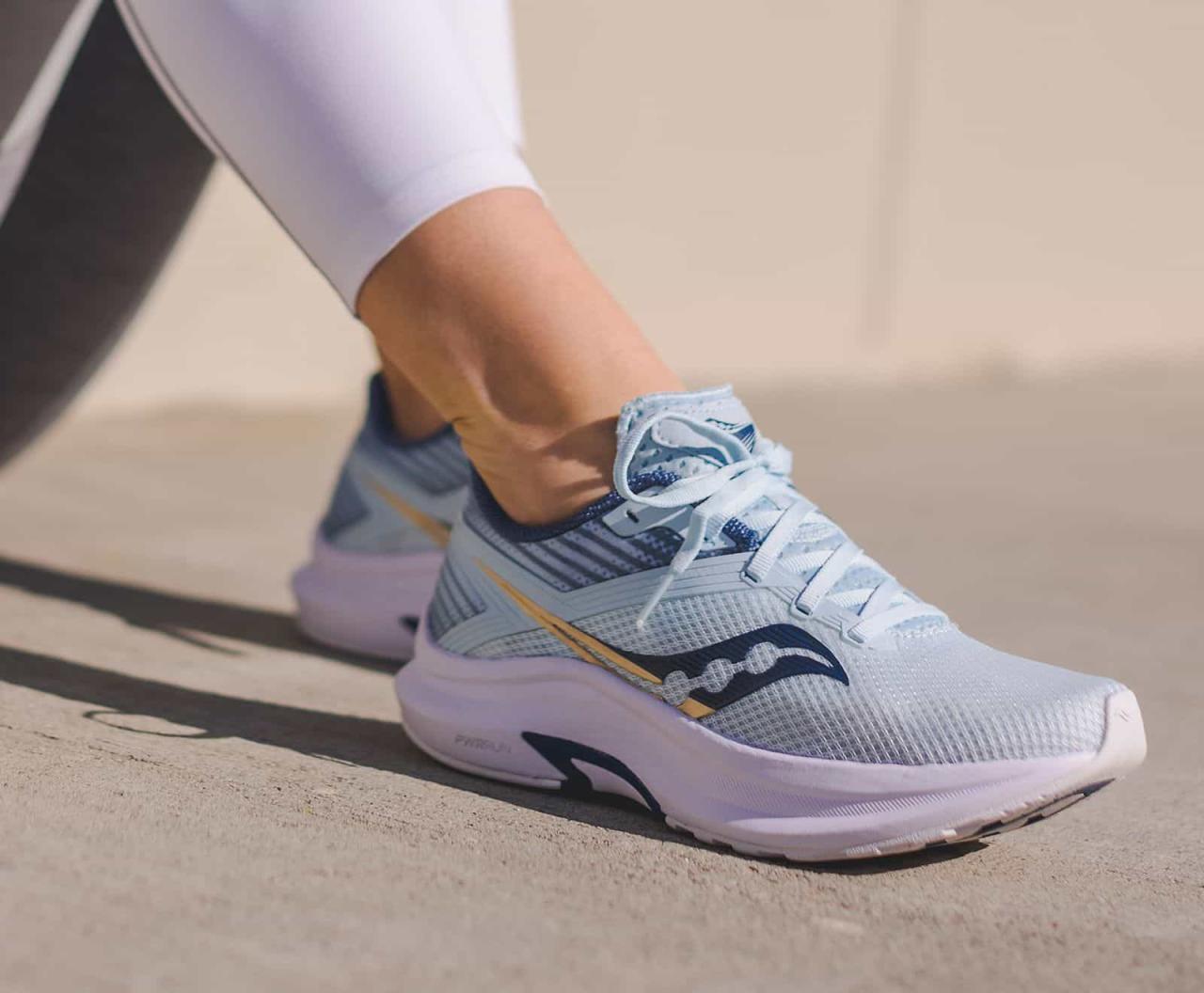
Rocker shoes, characterized by their curved soles, offer a unique approach to walking, potentially enhancing efficiency and reducing stress on the body. The curved sole design encourages a natural rolling motion, promoting a smoother and more efficient gait. This article delves into the potential benefits of rocker shoes for walkers.
Whether or not walkers should wear shoes with rockers is a topic that often sparks debate. While some argue it can improve stability and reduce stress on joints, others believe it can lead to imbalances. Ultimately, it’s important to consider individual needs and consult with a healthcare professional.
But before you embark on any new fitness journey, mastering some essential cooking skills can help fuel your body with healthy and delicious meals. After all, a balanced diet is just as important as proper footwear when it comes to overall well-being.
Reduced Stress on Joints and Muscles, Should walkers wear shoes with rockers
Rocker shoes can help alleviate stress on joints and muscles by altering the biomechanics of walking. The curved soles encourage a rolling motion, reducing the impact forces on the joints, particularly the knees and ankles. This can be especially beneficial for individuals with conditions like osteoarthritis or other joint issues.
“Rocker shoes can reduce the peak impact forces on the knee joint during walking by up to 20%.”
[Source
Research Paper on Rocker Shoes and Joint Impact]
Improved Walking Efficiency
Rocker shoes can enhance walking efficiency by reducing the energy expenditure required for each step. The curved sole design promotes a more natural rolling motion, minimizing the need for excessive muscle activation. This can translate to improved endurance and reduced fatigue during walking.
The debate about whether walkers should wear shoes with rockers is a fascinating one. It’s all about finding the right balance between support and mobility. But what’s really important is finding a way to enjoy the journey, and that’s where the power of walking together comes in.
Walking together helps you stay together , strengthening bonds and creating shared memories. So, whether you choose rockers or not, make sure you’re walking alongside those you love, and that’s the true recipe for a fulfilling experience.
“Studies have shown that individuals wearing rocker shoes can walk farther and for longer durations with less perceived exertion.”
[Source
Research Paper on Rocker Shoes and Walking Efficiency]
Enhanced Gait and Balance
Rocker shoes can promote a more stable and balanced gait. The curved soles encourage a wider base of support, improving balance and reducing the risk of falls. This can be particularly beneficial for individuals with balance issues or those who are at risk of falls.
“Rocker shoes can improve balance and reduce the risk of falls in older adults.”
[Source
Research Paper on Rocker Shoes and Gait Stability]
Considerations for Choosing Rocker Shoes
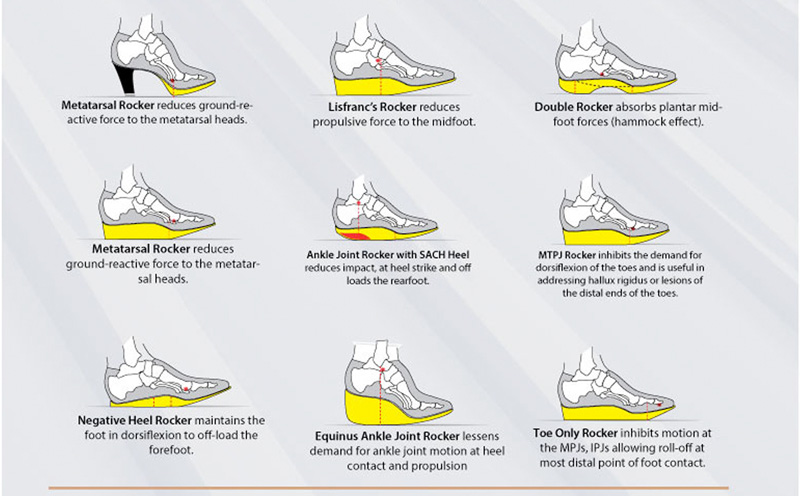
Rocker shoes are designed to enhance your walking experience by promoting a more natural rolling motion. Choosing the right rocker shoes involves considering several factors to ensure optimal comfort, support, and performance.
Gait Analysis
Understanding your gait, or walking pattern, is crucial for selecting the right rocker shoes. A gait analysis can identify any biomechanical imbalances or issues that might impact your walking efficiency. This information helps you choose shoes that address your specific needs.
The debate about whether walkers should wear shoes with rockers is a hot topic, and while I’m not a medical professional, I do know a thing or two about cooking. Speaking of, did you know you can make the most incredible dishes in a Dutch oven?
Check out this amazing resource for amazing things to do with a Dutch oven , it’s truly inspiring! Anyway, back to walkers and rockers, I think it’s important to consult with a healthcare professional to determine what’s best for individual needs.
Foot Type
Foot type plays a significant role in selecting rocker shoes. People with high arches may benefit from shoes with a more pronounced rocker, while those with flat feet may need a shoe with a less aggressive rocker.
Walking Style
Your walking style also influences the choice of rocker shoes. If you prefer a brisk pace, a shoe with a more aggressive rocker may be suitable. However, if you walk leisurely, a shoe with a gentler rocker may be more comfortable.
Features of Different Rocker Shoe Models
- Rocker Shape:The curvature of the rocker can vary from subtle to pronounced. A more pronounced rocker encourages a faster rolling motion, while a gentler rocker provides a smoother transition.
- Sole Material:Rocker shoes are often made with flexible materials like EVA foam or rubber, which provide cushioning and support. Some models may also incorporate carbon fiber plates for increased rigidity and responsiveness.
- Fit and Support:Proper fit is essential for comfort and performance. Look for shoes with a snug fit that provides adequate support for your arches and heels.
- Weight and Durability:Lighter rocker shoes can reduce fatigue, while durable models can withstand regular use.
Recommendations for Specific Rocker Shoe Brands or Models
- For casual walkers:The Brooks Ghost 15 and the Saucony Kinvara 14 are popular choices known for their comfort and versatility.
- For runners:The Hoka One One Clifton 9 and the Brooks Levitate 5 offer a balance of cushioning and responsiveness, ideal for runners of all levels.
- For people with foot problems:The New Balance 880v12 and the Asics GEL-Kayano 29 are designed to provide extra support and stability for those with flat feet, high arches, or other foot issues.
Potential Drawbacks of Rocker Shoes
While rocker shoes offer numerous benefits for walkers, it’s essential to acknowledge potential drawbacks that might affect your walking experience. These drawbacks are not universal and often depend on individual factors like walking style, fitness level, and the specific shoe design.
Adaptation Time
Rocker shoes, with their curved soles, promote a rolling gait that can feel different from traditional shoes. This change in gait can lead to a period of adaptation, as your body adjusts to the new movement pattern. Some individuals may experience a slight feeling of instability or awkwardness during the initial days or weeks of wearing rocker shoes.
Stability Issues
The rocker design can sometimes compromise stability, especially on uneven surfaces or when navigating obstacles. The rolling motion can make it challenging to maintain balance, particularly for individuals with balance issues or those who are new to rocker shoes.
Possible Discomfort
While rocker shoes are generally comfortable, some individuals may experience discomfort in certain areas, particularly in the ankles, feet, or calves. This discomfort can be attributed to the increased pressure on these areas due to the rolling motion.
Situations Where Rocker Shoes Might Not Be Suitable
Rocker shoes may not be ideal for all walking situations. For example, they might not be suitable for:
- High-impact activities:Rocker shoes are not designed for activities like running or jumping, where high impact forces are involved.
- Uneven terrain:While rocker shoes can be beneficial on flat surfaces, they may be less effective on uneven terrain, such as trails or rocky paths. The rolling motion can make it challenging to maintain balance and stability on such surfaces.
- Specific medical conditions:Individuals with certain medical conditions, such as ankle instability or foot problems, may find rocker shoes unsuitable. It’s essential to consult with a healthcare professional before using rocker shoes if you have any underlying medical conditions.
Alternatives to Rocker Shoes: Should Walkers Wear Shoes With Rockers
Rocker shoes aren’t the only way to enhance walking comfort and efficiency. Several alternative footwear options offer unique benefits and cater to diverse needs. Let’s explore some of these alternatives and see how they stack up against rocker shoes.
Cushioned Shoes
Cushioned shoes are designed to absorb shock and provide a soft, comfortable feel with each step. They often feature thick midsoles made of materials like EVA foam or gel. This cushioning helps reduce stress on joints, particularly in the heels and knees.
Benefits of Cushioned Shoes
- Shock Absorption:Cushioned shoes effectively absorb impact forces, reducing stress on joints, especially for individuals with conditions like plantar fasciitis or arthritis.
- Enhanced Comfort:The soft cushioning provides a comfortable feel, making walking more enjoyable, especially for long distances.
- Wide Availability:Cushioned shoes are readily available in various styles and brands, making it easy to find a pair that suits your needs and preferences.
Drawbacks of Cushioned Shoes
- Potential for Instability:Excessive cushioning can sometimes lead to instability, especially for individuals with weak ankles or balance issues.
- Limited Support:Some cushioned shoes may lack sufficient arch support, which can contribute to foot fatigue and discomfort.
- Increased Weight:The thick cushioning can add weight to the shoes, potentially increasing fatigue over long distances.
Minimalist Shoes
Minimalist shoes are designed to mimic barefoot walking, providing a closer connection to the ground and promoting natural foot mechanics. They typically have thin soles, minimal cushioning, and flexible uppers.
Benefits of Minimalist Shoes
- Improved Proprioception:Minimalist shoes enhance proprioception, the sense of body position and movement, which can improve balance and coordination.
- Strengthened Foot Muscles:The lack of cushioning forces the foot muscles to work harder, potentially improving strength and stability.
- Reduced Risk of Injury:Some studies suggest that minimalist shoes may reduce the risk of certain injuries, such as plantar fasciitis and Achilles tendonitis.
Drawbacks of Minimalist Shoes
- Increased Impact:The thin soles provide minimal cushioning, which can increase impact forces on joints, especially on hard surfaces.
- Gradual Transition:Transitioning to minimalist shoes requires a gradual approach to allow the feet to adapt to the increased stress.
- Limited Protection:Minimalist shoes offer less protection from sharp objects or uneven terrain compared to cushioned shoes.
Orthotics
Orthotics are custom-made or prefabricated inserts designed to support the arches and provide cushioning for the feet. They can be worn inside any type of shoe to improve comfort and reduce stress on the feet and lower limbs.
Benefits of Orthotics
- Improved Foot Support:Orthotics provide customized support for the arches, reducing strain on the feet and improving posture.
- Reduced Pain:They can help alleviate pain associated with conditions like plantar fasciitis, heel spurs, and metatarsalgia.
- Enhanced Comfort:By providing cushioning and support, orthotics can make walking more comfortable, especially for individuals with foot problems.
Drawbacks of Orthotics
- Cost:Custom-made orthotics can be expensive, while prefabricated options may not provide the same level of customization.
- Adjusting to Orthotics:It may take some time to adjust to wearing orthotics, as they can feel different from regular shoes.
- Limited Effectiveness:The effectiveness of orthotics can vary depending on the individual’s condition and the quality of the orthotic.
Final Wrap-Up
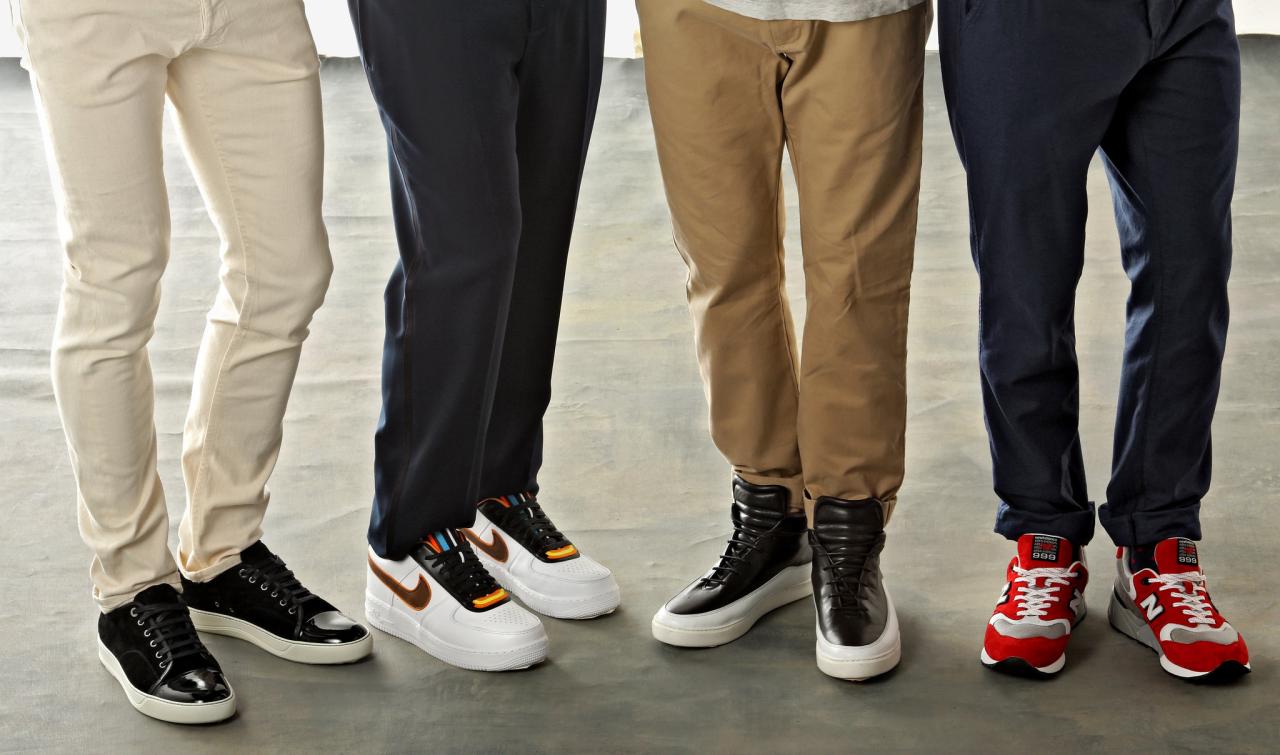
Whether or not rocker shoes are right for you ultimately depends on your individual needs, preferences, and walking goals. If you’re looking to improve your efficiency, reduce joint stress, and enjoy a more comfortable walk, rocker shoes might be worth exploring.
However, remember to consider the potential drawbacks and adapt your walking style accordingly. Ultimately, the best footwear for walking is the one that feels comfortable and supports your individual needs.

